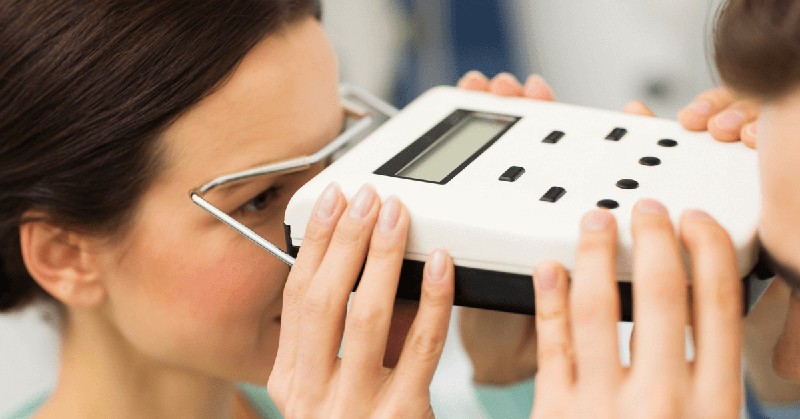
Here’s What You Need to Know about Pupillometer, its types, applications, advantages and why is it increasing in demand in the health care industry. Pupillometer is a medical device widely used in the ophthalmological departments. As vision-related problems and neurological disorders are progressively increasing. It is resulting in the increased demand for medical devices that can be used for the diagnosis and treatment of these diseases. A pupillometer helps in understanding the movements and dilation of the pupil in the eyes, any deviation in the results gives a clue about the deviation from the normal situation. Advancement of technology and its integration in designing new medical devices are bringing waves in the field of medicine and are expected to improve the healthcare facilities.
Pupillometer is a collective name for two devices. Both of them are used in ophthalmology, in combination they measure the distance between pupils through visual stimuli, and response of the pupil to the light reflex. A programmed pupillometer is a portable device that is reliable to measure the size of the pupil, reactivity, and symmetry of the pupil in response to light reflex. Pupillometry is a non-invasive method for assessment of pupil it is helpful in the neurological assessment.
From the studies of imaging modalities such as computerized tomography, and magnetic resonance imaging, dilation of the pupil is directly related to the change in the activity of the brain. So Pupil dilation is helpful in understanding the normal function of the eye as well as the activity of the brain is impacted by any disease.
Pupil dilation offers clues about neurological disorders and helps in diagnosis. It is helpful in designing psychological treatments. Pupillometer is widely used in ophthalmology, oncology, and neurology.
Pupillometer finds its application mainly in Hospitals and eye clinics. Several critical care units including cardiac intensive care, neurocritical care, surgical intensive care, medical intensive care, trauma, pediatric intensive care, and emergency department of the hospitals are adopting pupillometers for better diagnosis of disease.
The difference in the assessment of the results of the Pupillometer points out the damages of the nerves that are associated with any brain injuries. Pupillary Light Reflex (PLR) is helpful in the assessment of a variety of neurological problems. PLR assessment in turn is beneficial in examining the functions of the oculomotor and optical nerve. If any deviation is observed in this assessment then it indicates the horizontal shift of the central brain or intracranial tissues.
Pupillometry is useful in assessing brain tumors and it is accomplished across various settings. For understanding the depth of anesthesia, a pupilometer is used. Many studies are being conducted with the use of a Pupillometer for understanding various health conditions like breast cancer, stroke, and thyroid tumor. The pupil size, its response to light, pupillary unrest, and other such characteristics of the pupil is a good indicator of health conditions like head trauma, stroke, brain tumor, etc.
In Eye clinics, there is an increasing application of pupillometer for inspection of pupil dilation, which is beneficial in assessing diseases related to the retina. Pupillary light reflex assists in evaluating the accurate functionality of the visual system. Pupillometry identifies changes that may occur in the response of melanopsin and photoreceptors of the eye that helps in understanding damage on the inner and outer retina.
The Pupillometer Market has been witnessing rapid growth due to the increasing global burden for a neurological disorder and visual impairment day by day. Treatment of these disorders needs to have a proper diagnosis for better treatment, at the same time more eye care assessment tools are required. Pupil dilation offers indications that are helpful in understanding the lives of people who have neurological disorders.
Due to developing technologies and their integration in medical devices are helpful in improving the efficiency and efficacy of the Pupillometer. Manufacturing companies are researching on further use of pupillometer in different critical care fields to escalate the adoption of their product in different health care sectors. The Global Pupillometer Market has been anticipated to rise at a growth rate of 9.2% CAGR over the forecast period.